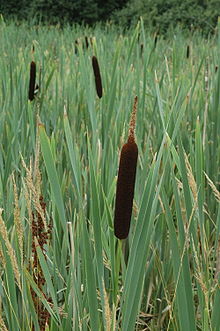Isorhamnetine
| Structural formula | |||||||||||||||||||
|---|---|---|---|---|---|---|---|---|---|---|---|---|---|---|---|---|---|---|---|

|
|||||||||||||||||||
| General | |||||||||||||||||||
| Surname | Isorhamnetine | ||||||||||||||||||
| other names |
|
||||||||||||||||||
| Molecular formula | C 16 H 12 O 7 | ||||||||||||||||||
| Brief description |
beige powder |
||||||||||||||||||
| External identifiers / databases | |||||||||||||||||||
|
|||||||||||||||||||
| properties | |||||||||||||||||||
| Molar mass | 316.26 g mol −1 | ||||||||||||||||||
| Physical state |
firmly |
||||||||||||||||||
| Melting point |
200 ° C |
||||||||||||||||||
| solubility |
|
||||||||||||||||||
| safety instructions | |||||||||||||||||||
|
|||||||||||||||||||
| As far as possible and customary, SI units are used. Unless otherwise noted, the data given apply to standard conditions . | |||||||||||||||||||
Isorhamnetin is a secondary metabolite of plants that belongs to the group of flavonoids .
Occurrence
Glycosides of this substance with varying sugar components can be found in pears , almonds or in various rose apple plants and pipe flowers . Evidence was also given in pollen from pumpkins and corn . In the broad-leaved cattail plant , which is used in Asian folk medicine, the substance was one of the proven compounds. Evidence in the New Zealand plant Carmichaelia proves the worldwide occurrence of this substance.
biosynthesis
Quercetin is methylated by a methyl transferase . The methyl group is supplied by S-adenosyl methionine .
metabolism
After eating the fruit, the substance was detected in the blood plasma. Glycosidases break down the sugar component in the liver and the substance is then excreted in the urine.
Individual evidence
- ↑ a b c d Isorhamnetin data sheet at Sigma-Aldrich , accessed on February 4, 2019 ( PDF ).
- ↑ a b Entry Isorhamnetin at enzolifesciences.com, accessed on February 4, 2019.
- ^ A b Tod F. Stuessy, Mikio Ono: Evolution and Speciation of Island Plants . Cambridge University Press, 2007, ISBN 0-521-04832-X , pp. 261 ( limited preview in Google Book search).

